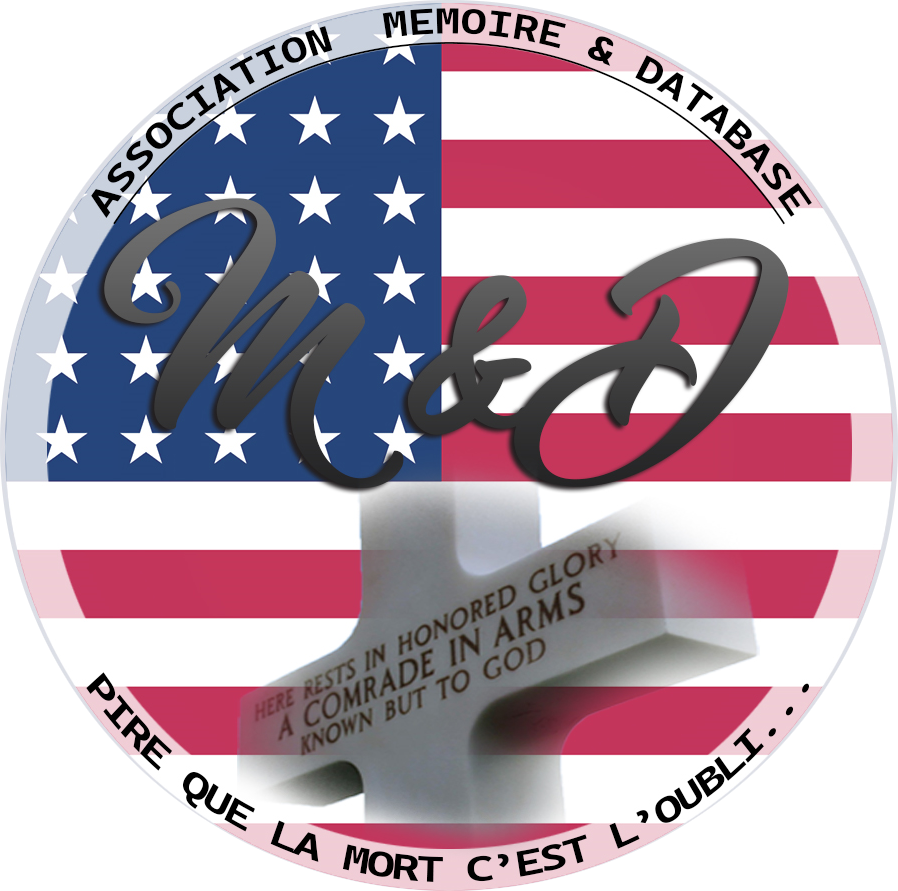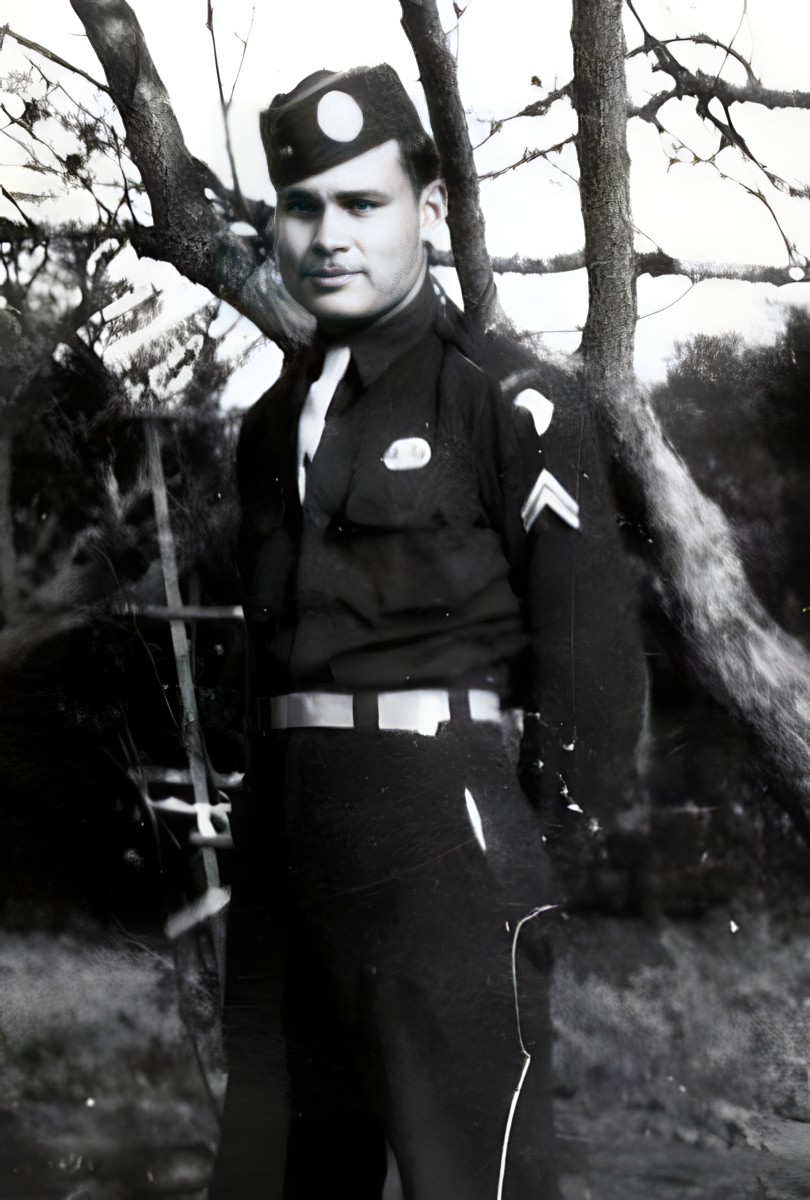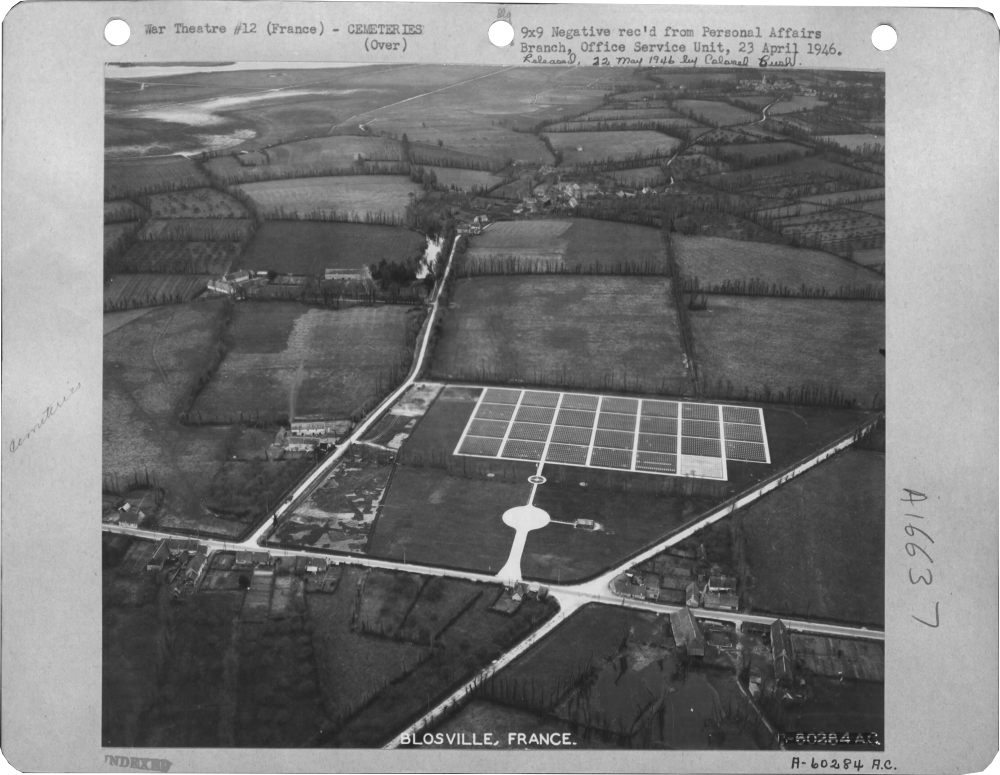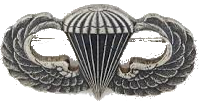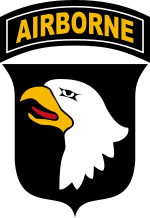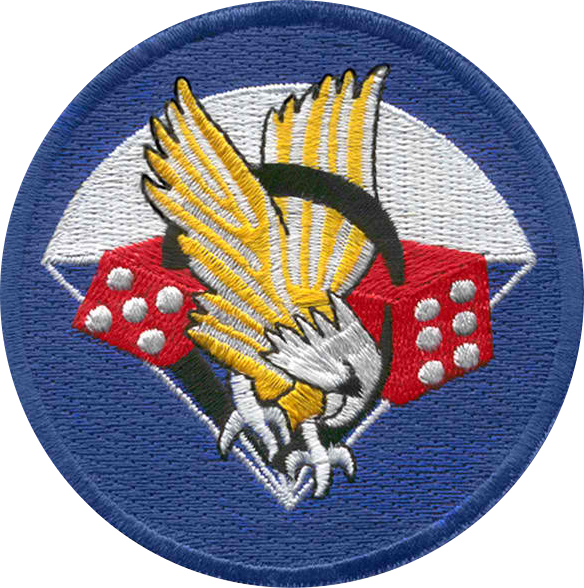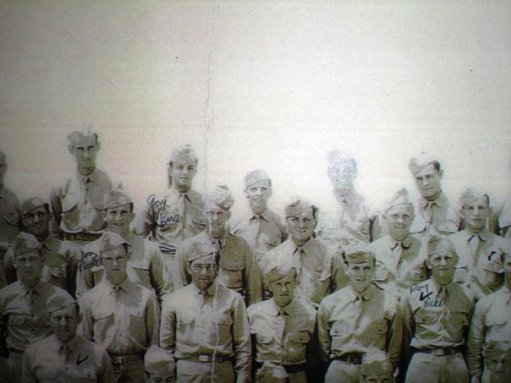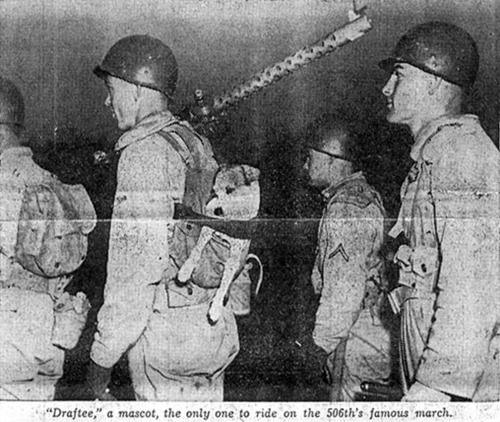|
Benjamin Arthur Joseph STONEY
| ||||||||||||||||||||||||
|---|---|---|---|---|---|---|---|---|---|---|---|---|---|---|---|---|---|---|---|---|---|---|---|---|
|
Source : Bruno Cadeville (Ellen Marchese) | ||||||||||||||||||||||||
| NUMBER OF SERVICE | 39530033 | |||||||||||||||||||||||
| AGE | 23 years | |||||||||||||||||||||||
| DATE OF BIRTH | 10 October 1921 Durham, Butte County CALIFORNIA | |||||||||||||||||||||||
| ETAT | CALIFORNIA | |||||||||||||||||||||||
| FAMILY | Parents : Zena Geraldine Clark Stoney & Robert Martell Stoney Brothers : Martell Clark Stoney, James "Jimmy" Tracy Stoney, Vernon "Chick" Elwood Stoney. Grandfather : Frank Clark Half-brothers : Daniel Q. Mullins, Pat Mullins Step-father : Daniel P. Mullins | |||||||||||||||||||||||
| RANK | Technician 4th Class | |||||||||||||||||||||||
| FONCTION | Paratroopers | |||||||||||||||||||||||
| JOB BEFORE ENLISTEMENT |  | |||||||||||||||||||||||
| DATE of ENLISTEMENT | 4 August 1942 Los Angeles CALIFORNIA | |||||||||||||||||||||||
|
COMPANY BATTALION |
S-2 Easy Company 2nd Battalion | |||||||||||||||||||||||
| REGIMENT | 506th Parachute Infantry Regiment | |||||||||||||||||||||||
| DIVISION | 101st Airborne Division | |||||||||||||||||||||||
| DATE OF DEATH | 6 June 1944 | 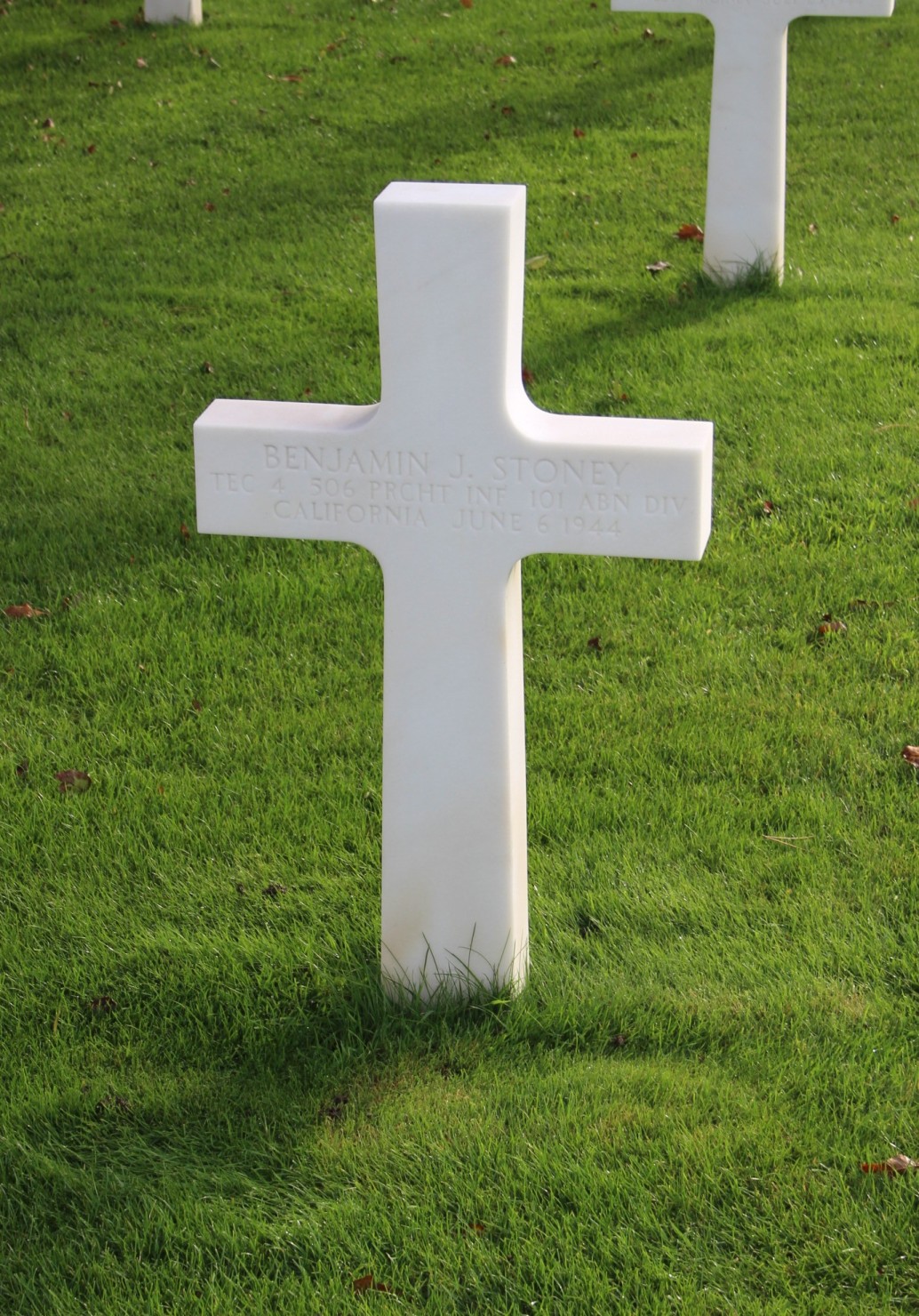 | ||||||||||||||||||||||
| STATUS | KIA | |||||||||||||||||||||||
| PLACE OF DEATH | Vierville | |||||||||||||||||||||||
| CEMETERY TEMPORARY |
CEMETERY TEMPORARY of Blosville N°3508
| |||||||||||||||||||||||
| CEMETERY | NORMANDY AMERICAN CEMETERY of Colleville | |||||||||||||||||||||||
| GRAVE |
| |||||||||||||||||||||||
| DECORATION |
| |||||||||||||||||||||||
| ||||||||||||||||||||||||
| STORY | ||||||||||||||||||||||||
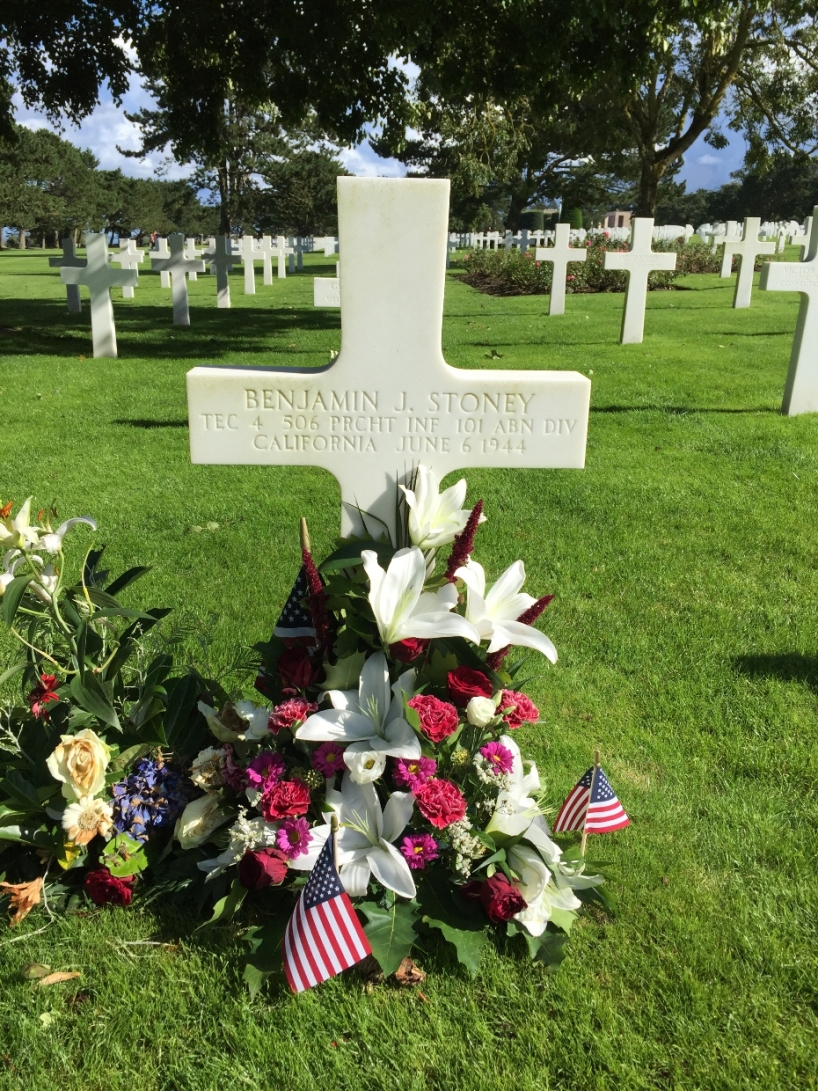 |
A California native, Benjamin has Indian origins from the “Maidu” Native American people and the “Konkow” tribe. This heritage comes from his mother. Benjamin has 3 brothers and 2 half-brothers. | |||||||||||||||||||||||
|
In November, the training ends and only the best are qualified to continue the path to become paratroopers. | 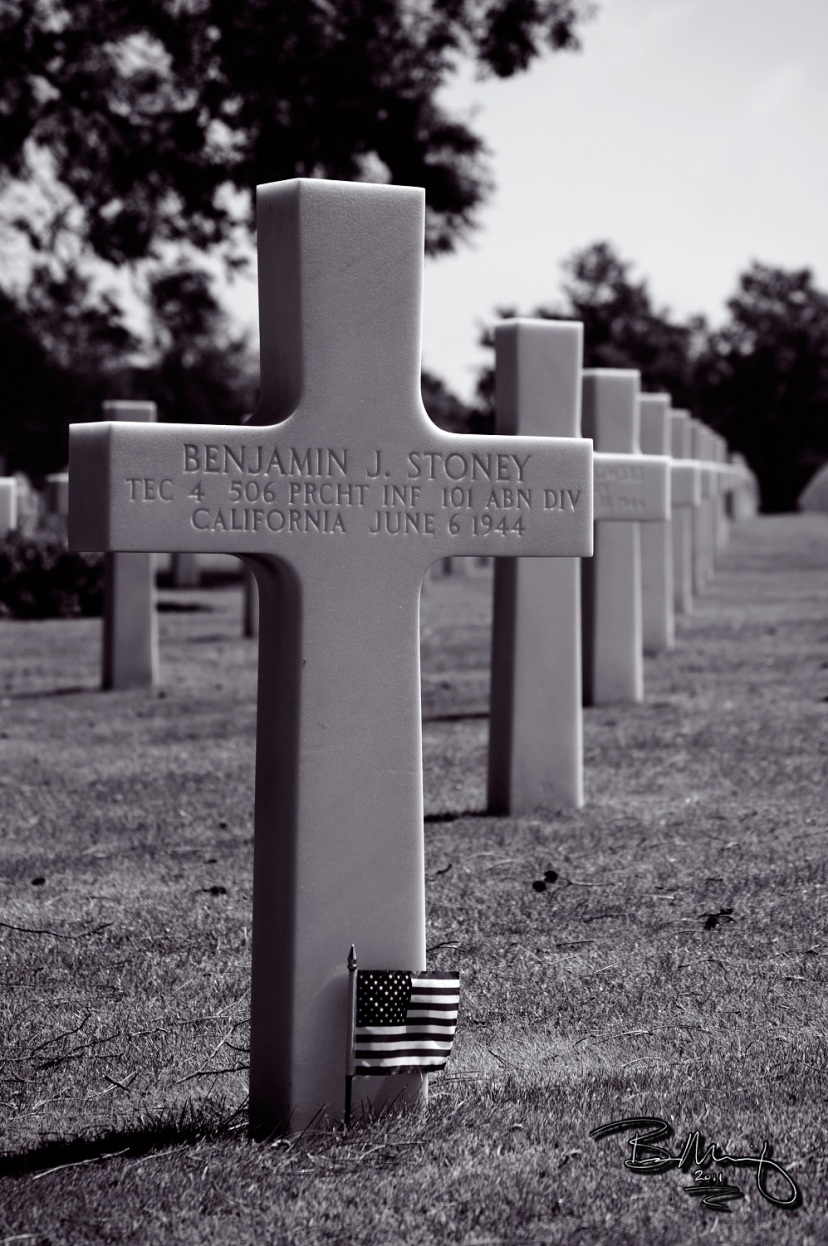 | |||||||||||||||||||||||
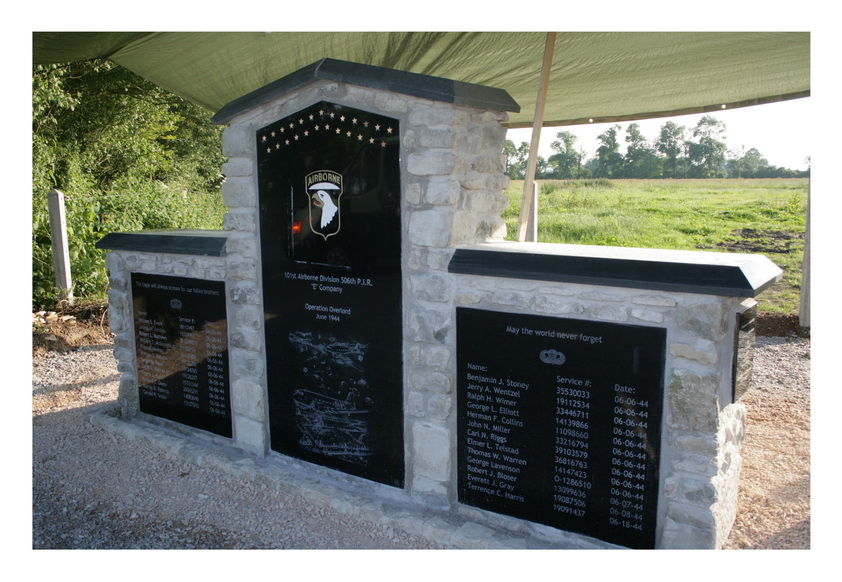 | At the end of May, it’s departure time towards Kentucky and Sturgis where they settle under war conditions (life under tents, rations...). On June 10, the 506th PIR is attached to the 101st Airborne Division. | 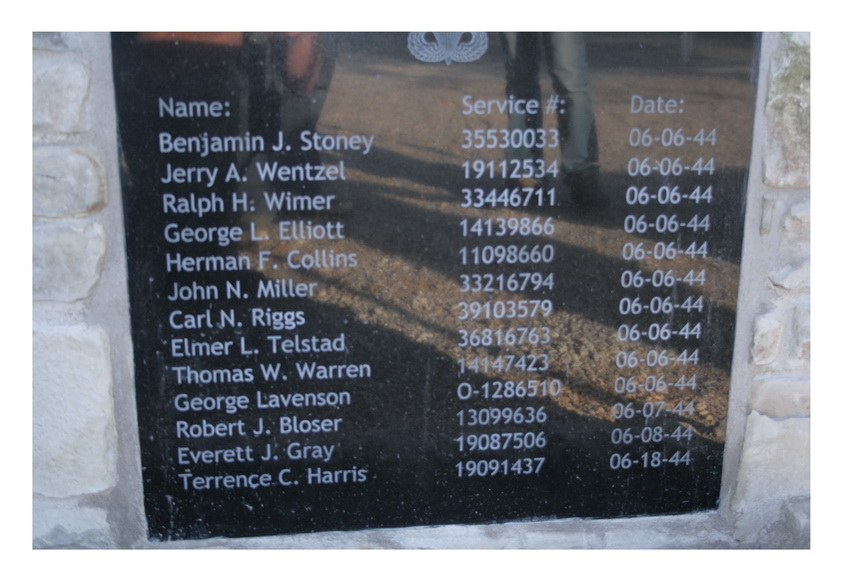 | ||||||||||||||||||||||
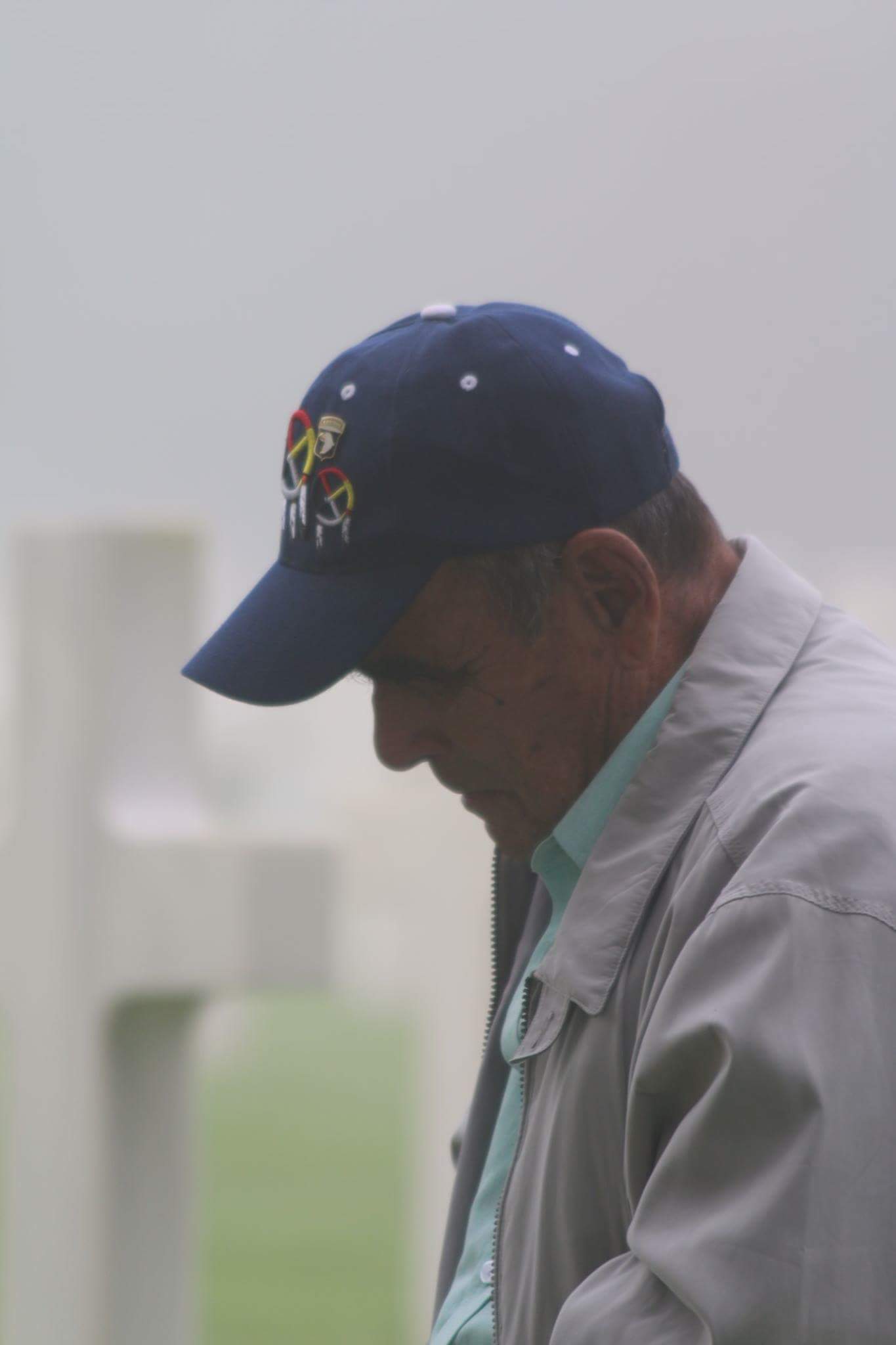 | Sergeant Stoney's brother at the Normandy gravesite, D-Day Anniversary 2016 | 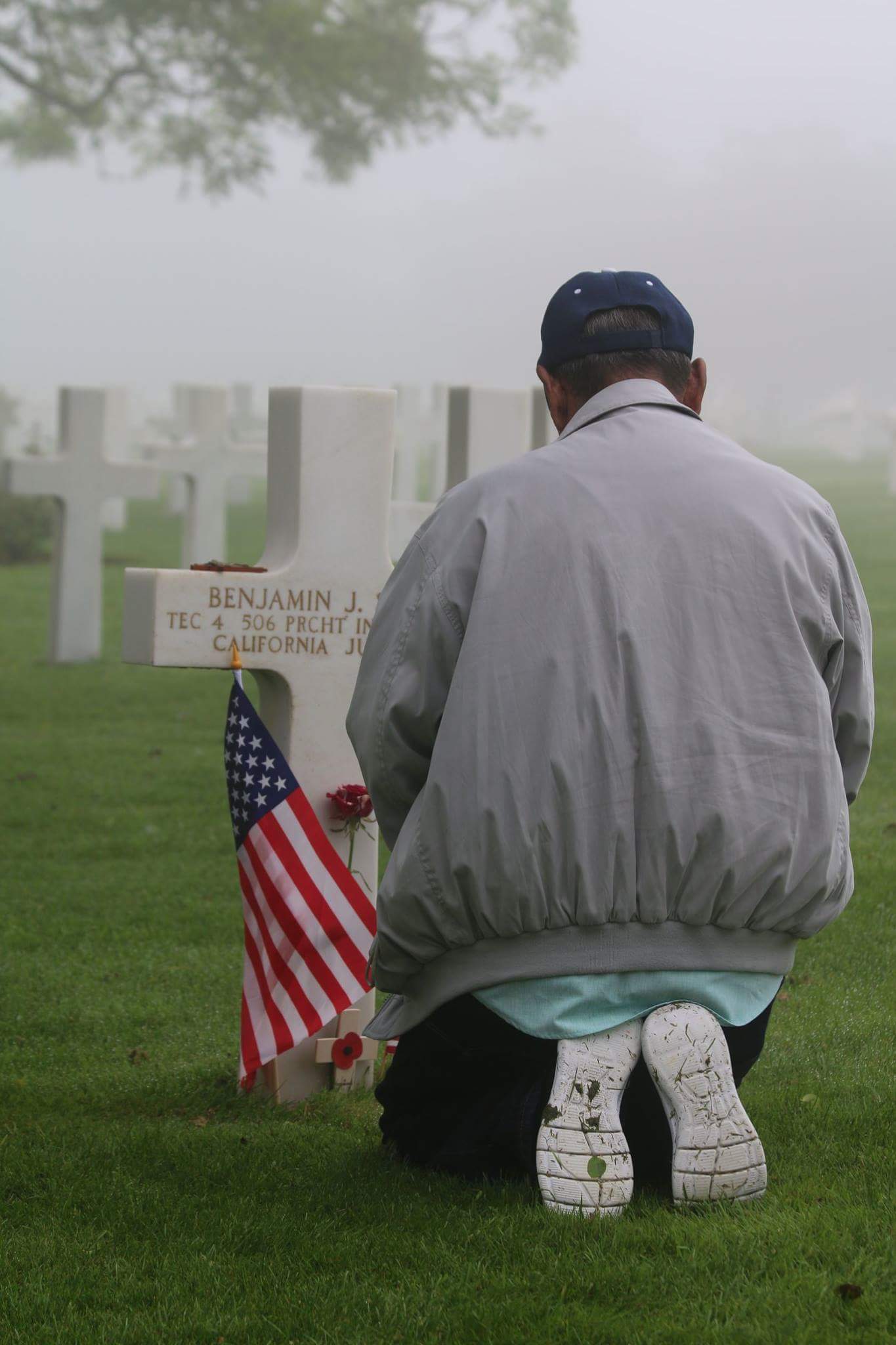 | ||||||||||||||||||||||
|
From July 5 to 15, the 506th participates to big maneuvers across three States (Kentucky, Indiana and Tennessee) where the airborne troops and the troops transported by gliders operate together. In real combat situations, Benjamin achieves three jumps during those days when the extreme combat conditions are present (night marches,...). At the end of these maneuvers, the regiment stops by Camp Breckinridge where they can take showers and other small luxuries. From May 9 to 12, the Eagle exercise is meant to be the rehearsal for the airborne operation on D-Day, and so, to put the units in the real conditions of what they will live. For Benjamin and his unit, the goal is a German battery. They successfully achieve their mission, but the result of this exercise is not at the level expected by the high command. | ||||||||||||||||||||||||
|
Sgt. Stoney with his outfit, 101st Airborne, at Ft. Bragg, NC. |
Benjamin Stoney (2nd from right) on long march of December '42 from Camp Toccoa to Atlanta. | |||||||||||||||||||||||
|
These last days are focused on studying the targets, the field thanks to Sands Tables, enemy forces, missions... Benjamin will rest in Blosville temporary cemetery before being buried at Colleville-sur-Mer. | ||||||||||||||||||||||||
Activated/Activé |
Normandy/Normandie |
| 15 Aug 1942 | Days of Combat/Jour de Combat 214 |
| Casualties/Victimes 9 328 | |
Entered Combat/Entré au combat |
|
| 6 Jun1944 D-Day | |
|
Commanding Generals/Commandants généraux Maj. Gen. William C. Lee (Aug 42 - Mar 44) |
Campaigns/CampagnesNormandy (6 Jun 44 - 24 Jul 44) Rhineland (15 Sep 44 - 21 Mar 45)
|
PLAN DE ROUTE DE LA CAMPAGNE - CAMPAIGN ROUTE MAP |
|
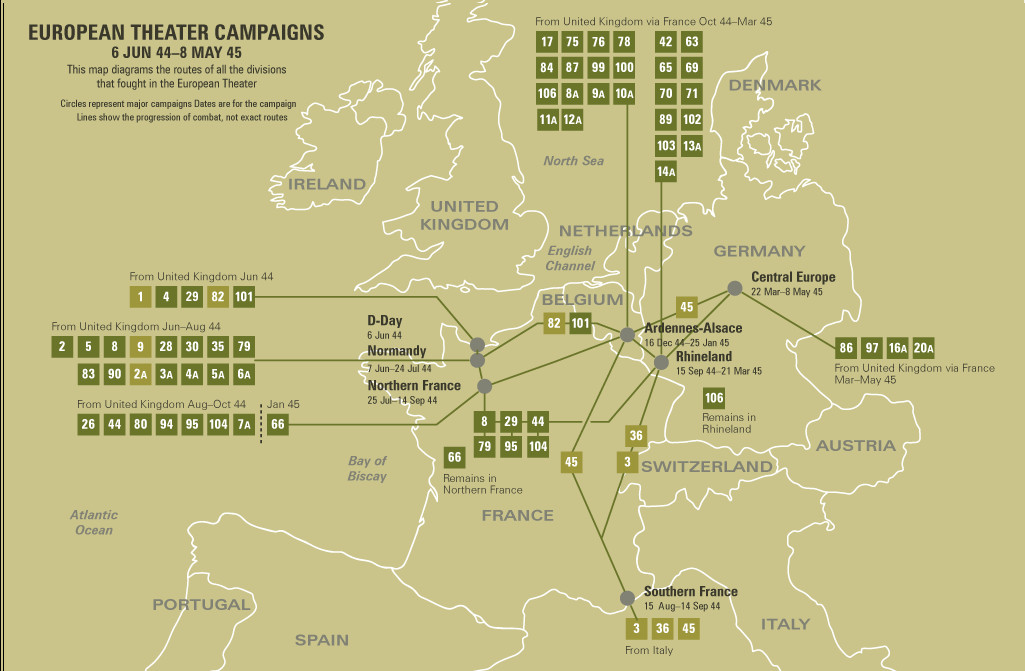 |
|
DIVISION CHRONICLEThe 101st Airborne arrived in England, 15 September 1943, and received additional training in Berkshire and Wiltshire. On 6 June 1944, the Division was dropped into Normandy behind Utah Beach. Against fierce resistance it took Pouppeville, Vierville, and St. Come du Mont. On the 12th, the stronghold of Carentan fell, and after mopping up and maintaining its positions, the Division returned to England, 13 July, for rest and training. On 17 September 1944, taking part in one of the largest of airborne invasions, the 101st landed in Holland, took Vechel and held the Zon bridge. St. Oedenrode and Eindhoven fell after sharp fighting on the 17th and 18th. Opheusden changed hands in a shifting struggle, but the enemy was finally forced to withdraw, 9 October. After extensive patrols, the Division returned to France, 28 November, for further training. On 18 December, it moved to Belgium to stop the German breakthrough. Moving into Bastogne under the acting command of Brig. Gen. Anthony C. McAuliffe, it set up a circular defense and although completely surrounded, refused to surrender on 22 December. Its perimeter held against violent attacks. The 4th Armored Division finally reached the 101st on the 26th and the enemy offensive was blunted. Very heavy fighting continued near Bastogne for the rest of December and January. On 17 January 1945, the Division moved to Drulingen and Pfaffenhoffen in Alsace and engaged in defensive harassing patrols along the Moder River. On 31 January, it crossed the Moder in a three-company raid. After assembling at Mourmelon, France, 26 February 1945, for training, it moved to the Ruhr pocket, 31 March, patrolling and raiding in April and engaging in military government at Rheydt and Munchen-Gladbach. The 101st reached Berchtesgaden by the end of the war and performed occupational duties until inactivation in Germany. |
CHRONIQUE DE DIVISIONLe 101st Airborne est arrivé en Angleterre, le 15 septembre 1943, et a reçu une formation supplémentaire dans le Berkshire et le Wiltshire. Le 6 juin 1944, la division est larguée en Normandie derrière Utah Beach. Contre une résistance féroce, il fallut Pouppeville, Vierville et St. Come du Mont. Le 12, le fief de Carentan est tombé, et après avoir nettoyé et maintenu ses positions, la Division est revenue en Angleterre, le 13 juillet, pour se reposer et s'entraîner. Le 17 septembre 1944, participant à l'une des plus grandes invasions aéroportées, la 101st débarque en Hollande, prend Vechel et tient le pont de Zon. St. Oedenrode et Eindhoven sont tombés après des combats acharnés les 17 et 18. Opheusden a changé de mains dans une lutte changeante, mais l'ennemi a finalement été forcé de se retirer, le 9 octobre. Après de longues patrouilles, la Division revint en France le 28 novembre pour suivre une formation complémentaire. Le 18 décembre, il a déménagé en Belgique pour arrêter la percée allemande. Déménagement à Bastogne sous le commandement de Brig. Général Anthony C. McAuliffe, il a mis en place une défense circulaire et bien que complètement encerclé, a refusé de se rendre le 22 décembre. Son périmètre tenu contre les attaques violentes. La 4e division blindée atteignit finalement la 101e le 26 et l'offensive ennemie fut émoussée. De très violents combats ont continué près de Bastogne pour le reste de décembre et janvier. Le 17 janvier 1945, la division s'est déplacée à Drulingen et à Pfaffenhoffen en Alsace et s'est livrée à des patrouilles de harcèlement défensif le long de la rivière Moder. Le 31 janvier, il a traversé le Moder dans un raid de trois compagnies. Après s'être rassemblé à Mourmelon, France, le 26 février 1945, pour s'entraîner, il s'installa dans la poche de la Ruhr, le 31 mars, patrouillant et faisant des raids en avril et s'engageant dans un gouvernement militaire à Rheydt et Munchen-Gladbach. La 101e a atteint Berchtesgaden à la fin de la guerre et a exercé des fonctions professionnelles jusqu'à l'inactivation en Allemagne. |
| SOURCE INFORMATION & PHOTO | Armydivs.squarespace.com |
|---|
| SOURCE INFORMATION & PHOTO | Bruno Cadeville - Findagrave.com - Clive TIRLEMONT - Abmc.gov - Orovilleveteransmemorialpark.org - Frédéric LAVERNHE - Honorstates.org- Valeria Gallone |
|---|---|
| PROGRAMMER | Clive, Frédéric & Renaud |


